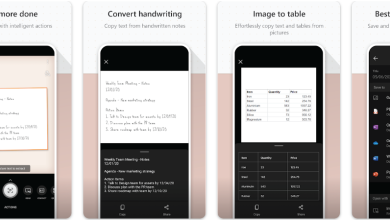4 Ways to Protect Your Money From Online Fraud

The rise of online baking means that more people and organizations than ever before are dealing with their money online. Making transactions and managing your financial assets online is often much more convenient than having to physically go into a store or a bank. No longer are we restricted to taking care of our shopping and finances within a 9-5pm window – we can make payments and move money online at any time of the day from wherever we are in the world.
But as digital technology grows, so too does the risk of online threats. Cash stored in online bank accounts, credit card information, and other assets managed digitally, are in danger of attack from cybercriminals. It is therefore vital that you take all necessary measures to ensure that you protect your information from fraudulent activity. But, how exactly do you protect your money from online fraud? We’ve listed four things to help you prevent you from losing your money to cybercriminals.

1: Know the common scams
When protecting your money from online attacks, it’s a good idea to familiarise yourself with the most common scams used by criminals. Being aware of the latest con artist tricks will keep you one step ahead and make you more likely to avert malicious hackers in the future.
Common online scams that could put your money at risk include catfishing, money transfer scams, phishing, make money fast schemes, false antivirus software and tech support, fake retailer sites, and many, many more.
Online dating fraud – often referred to in popular culture as ‘catfishing – is becoming increasingly common in our digital world and unfortunately saw a rise during the pandemic lockdowns when people were more lonely and vulnerable. When someone is ‘catfished’, they have fallen victim to a scammer often posing as a potential love interest. Con artists who catfish will charm their target to trick them into forming a relationship with them. Once they have established a bond, they will then claim to have money troubles, encouraging the victim to send them cash.
Make sure you are vigilant to phishing scams, which are commonly used by criminals to steal bank details. Sent in via email, text message, or phone call, phishing messages contain fraudulent information designed to deceive victims into either revealing sensitive information or downloading malicious software to their device.
Similar to phishing scams are money transfer scams. These usually come in the form of an email requesting that the victim send a sum of cash, with the promise of a significant return. As predicted, no such return manifests and the victim loses their money.
These are some of the most common online scams; but remember, criminals are always coming up with new deceptions to steal your money, so make sure you stay informed so that you can be prepared.
2: Get protection
A good way to reduce the risk of losing your money to fraud is through monitoring software that detects criminal activity on your account. Consider using a service that offers account takeover prevention, which can avert fraud attacks before they even take place. Such prevention methods will protect your information by detecting malicious login attempts by both humans and bots and will give you the peace of mind that your hard-earned cash is much safer.
3: Don’t give out personal information
Never give out any personal information – such as your bank account details or passwords – online or on the phone. If you receive any correspondence from your bank requesting personal information, always treat it with caution – contact your bank to confirm that the message you have received is indeed from them before you respond. Also, you should never store your credit card details or passwords in unencrypted email accounts; neither should you store your password in plain text in a file within your computer, phone, or any other electronic device.
Also be careful with what you share on social media. You might want to show all your friends your new driving licence after passing your test, but sharing a picture of it on your profile could be a risky move. As a general rule, don’t share images of anything that contains any kind of personal identification material, such as passports, university matriculation cards – even college acceptance letters and exam results can be unsafe. Make sure your social media settings are set to private and switch your location settings off.
If you suspect that you have been a victim of online fraud, you should report the crime to the police through Action Fraud if you live in the UK.
4: Update passwords
Changing your passwords and PIN numbers regularly is a good way to reduce the risk of online fraud. Consider updating them every six months or so and make sure they are difficult to crack. Never use obvious characters, such as from your phone number, postcode, mother’s maiden name, or similar. These passwords are easy to decode and will put your money and information at risk. Always choose a password that’s completely random in order to protect yourself more effectively.
Conclusion
There are always going to be cruel opportunist criminals who will use deception in an attempt to steal your money. As long as you are wise to the latest scams and take on board all our advice, you should be able to protect your money from online fraud.




